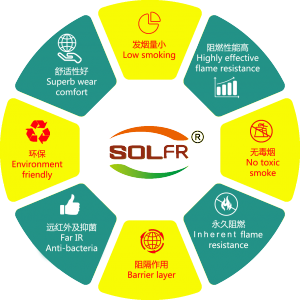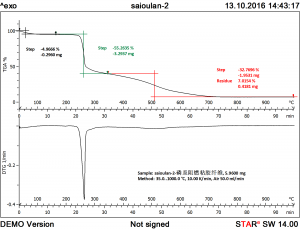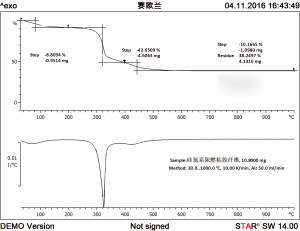LINDAU, Germany — February 10, 2017 — He founded Lindauer DORNIER GmbH (LiDO) in 1950 and led the company successfully for several decades. He was not only at home in the world of textile machines but also in the world of aircraft construction — as exceptional design engineer and entrepreneur who was far ahead of his times: Peter Dornier. The second eldest son of aeronautical pioneer Claude Dornier would have been 100 on January 31.
Ideas, designs, trials — Peter Dornier was born into this world of aircraft construction in Friedrichshafen, Germany on January 31, 1917. Already as a young person, he started creating design drawings which he then kept together with his notes in his sketch- books. He completed his studies at the Munich Technical University, Germany, in 1944 as graduate engineer. Already during his training his father assigned him tasks at the Dornier Factory in Friedrichshafen-Manzell. It quickly became apparent that his unconventional ideas gave important impulses to aircraft construction. One example as a young engineer was when his father involved him in a project for high-performance aircraft for speed records. Together with chief engineer Eugen Jäger, he developed the concept for the Do 335 which was the fastest propeller aircraft in the world at its time. For this achievement he was 1944 awarded a prize from the Lilienthal Society. Later in the Sixties he also gave decisive impulses for the development and construction of the Do 31, today still the only transport aircraft with jet propulsion as well as vertical take-off and landing capability.
The Dornier company was left with nothing at the end of the Second World War: Destroyed or confiscated machinery and factories as well being forbidden to be involved in aircraft construction prevented any industrial activities. Claude Dornier was placed under house arrest by the French troops. Despite the difficult times, Peter Dornier proved his skills as entrepreneur: He founded an engineering firm in 1946 and started research on wind power plants. To ease the severe housing shortage and to bring as many “Dornianer” from his father’s company back to work and livelihoods, he planned building transportable prefabricated cabins made of aluminum, so-called “Wohnzeuge” (livingcrafts) instead of aircrafts. Due to a shortage of capital, the production was too expensive. Unfortunately his plan failed. Peter Dornier had to discard his idea.
In 1949 Peter Dornier took over the previously occupied factory in Rickenbach, Germany, after it was released. He founded Lindauer Dornier GmbH in July of the following year; 14 people started work there. A decisive change in the production program resulted from a meeting with the director of the textile company Erba in Wangen, Germany, who asked him to construct shuttle looms for his factory: The start signal for the production of weaving machines that has remained an important mainstay until this day. Already at that time, Peter Dornier designed a completely enclosed weaving loom as can be seen in notes in his sketchbooks. His idea: Air-condition each single weaving loom to save energy as well as to collect and dispose of the dust created that soiled the fabric. The machine housing was designed to reduce the then unbearable noise in the shuttle loom weaving mills. This concept was revolutionary at that time but unfortunately too expensive. Such developments first went into series production several decades later.
Already at the start of the Sixties, a time when weaving loom production was running at full load, Peter Dornier recognized that a new era was evolving with the introduction of shuttleless weaving machines. In a detailed study, also included in the sketchbooks mentioned, he considered his ideas for a new machine concept. He designed a multiple widths weaving machine with the drive positioned in the center between the four cloth widths. Peter Dornier considered using air, water, a rapier or a projectile as possible aid for transporting the filling yarn on such shuttleless weaving machine. However he decided not to realize this complex concept but to build a rapier weaving machine instead which took off successfully at the end of the Sixties. Peter Dornier had created an extremely flexible weaving machine where the solid construction allowed producing, above all, technical fabrics and therefore opened up the imperative structural transformation of the textile industry towards technical textiles.
Peter Dornier’s ability to listen to people, to gather ideas and develop opportunities for new markets led also to the founding of a second business division of the Lindauer Dornier GmbH, the specialty machinery construction.
In 1950 Peter Dornier got to know Hans Haubold. The latter had produced textile finishing machines in Chemnitz, Germany, before the war. They soon agreed that Dornier should construct these machines under license. The high quality and economic efficiency of the Dornier textile dryer was soon well-known. Other manufacturers outside of textile finishing also gained interest in the drying plants. The transfer from cellophane to oil-based packaging films that occurred five years later led to large chemical companies searching for a suitable technology. Peter Dornier, together with his employees from the textile dryers, was successful in developing those into film stretching lines, which are now the second, important mainstay of the Lindauer Dornier GmbH.
At about the same time, the Dornier GmbH was founded again in Friedrichshafen, Germany, and the Lindauer Dornier GmbH integrated in the corporate group. Aircraft engineering restarted and Peter Dornier was significantly involved in various developments.
As requested by his father in the beginning of the year 1961, he dedicated his full attention to the Lindauer Dornier GmbH. The intensity of developments in weaving and specialty machinery engineering increased and the company continuously grew. In 1985, it was planned that the Dornier-Group, to which also Lindauer Dornier GmbH belonged, should be sold to the Mercedes-Benz AG. Peter Dornier agreed to the sale but only on the premise that all shares in the LiDO will be transferred to him.
A stroke of luck for the company! Peter Dornier invested large amounts in renewing the machinery and production facilities. At the same time, he intensified the development and created one of the most modern textile machine factories. All this se- cured the positive development of the Lindauer Dornier GmbH and was the basis for the growth to the present size. Presently the family-owned company produces with approximately 1,000 employees weaving and specialty machines exclusively at two production sites in Germany.
In honouring his services, Peter Dornier received many awards and honors. He set his own finest memorial when he created the Peter Dornier Foundation in 1985 which receives every year 10 percent of the operative profit of the Lindauer Dornier GmbH.
“By means of this foundation he wanted to give back to the community some of the material values he accrued together with his employees” said Maja Dornier who became Chairwoman of the foundation after her husband’s death on January 28, 2002, and has continued to guide it since then according to his principles.
From the very beginning of his entrepreneurial career, Peter Dornier trusted the abilities of his employees and promoted their talents – irrespective of their cultural background. As a prime example, two decisive weaving machine developments, the concept of the Dornier rapier and air-jet weaving machines, were based on the ideas of a Greek, Nikolaus Kokkinis, and a Syrian, Dr. Adnan Wahhoud.
Peter Dornier would have been 100 years old on January 31, 2017.
Posted February 10, 2017
Source: DORNIER







